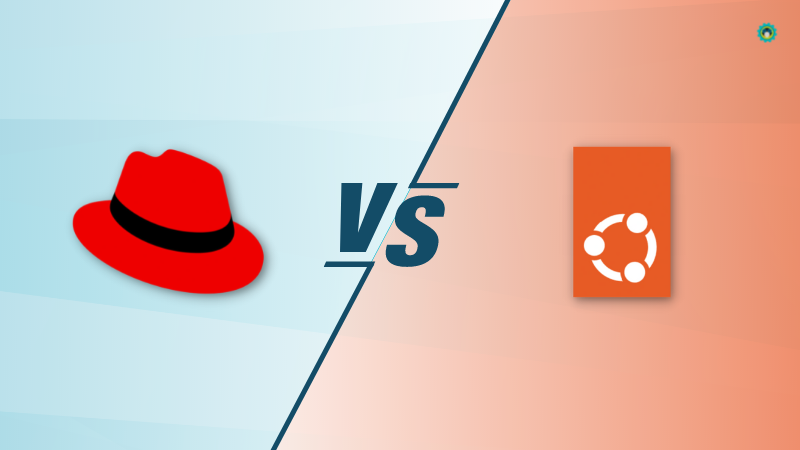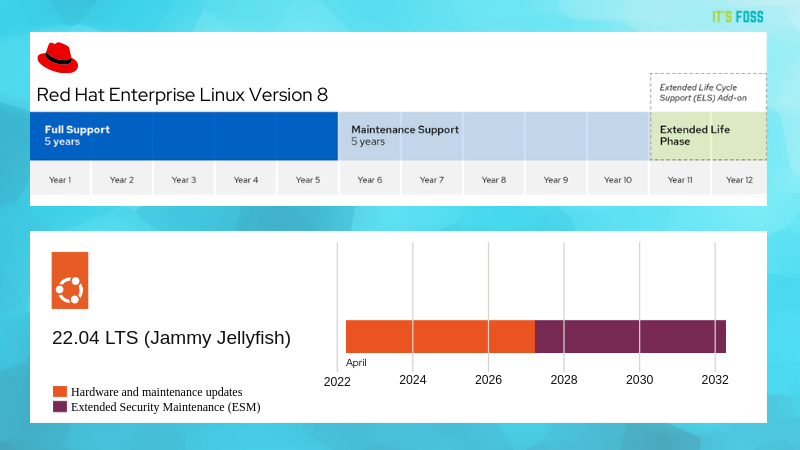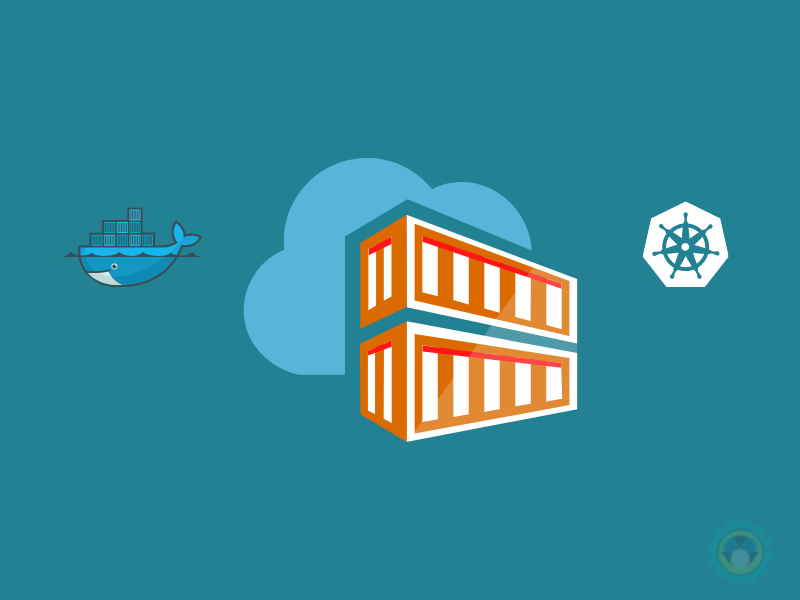Red Hat Enterprise Linux (RHEL) and Ubuntu are two of the most popular Linux distributions in the open-source world.
Of course, they are different and commercially successful, but in what aspects? Who uses Ubuntu? And, should you consider using Red Hat Enterprise Linux for anything?
Let’s explore the differences in this article. Here, I present a detailed breakdown that may help you choose one for your use case.
Red Hat vs Ubuntu: History

Red Hat, now an IBM subsidiary—was founded in 1993, with its headquarters located in Raleigh, North Carolina, USA. A few years later, Red Hat Linux came into existence on May 13, 1995.
To clarify, the early versions of Red Hat’s Linux distributions were called Red Hat Commercial Linux or Red Hat Linux.
Red Hat Enterprise Linux (RHEL) is a Linux distribution created, maintained, and backed by Red Hat Inc, which was initially released on February 22, 2000. This led to the discontinuation of “Red Hat Linux” in 2004.
Ubuntu (based on Debian) was introduced by a UK-based company, Canonical Ltd., founded by Mark Shuttleworth, a South African entrepreneur. It was initially released on October 20, 2004.
1. Who is it for?
Red Hat and Canonical focus on managing and licensing open-source software products to enterprises.
However, Red Hat Enterprise Linux is only an enterprise-focused offering, whereas Ubuntu targets individual desktop users and enterprises.
It is important to note that Fedora Linux acts as the upstream and caters to non-commercial users. So, if you want to experience Red Hat on your desktop, Fedora Linux would provide you with the closest experience.
If you are curious, you can explore Ubuntu vs Fedora and Ubuntu vs Debian to know the differences between their desktop offerings (and Ubuntu’s upstream/base).
2. Premium or Free
What’s the wildest difference between the two Linux distributions? Well, it’s about the access to it and its subscription model.
Even though Red Hat is the biggest open-source company, RHEL requires you to have a subscription for the most part, whereas Ubuntu has no such requirements.
Now, because you need an active subscription (you cannot download packages from RHEL repositories without one), getting people to “try out” RHEL can be a barrier to entry.
So, in January 2021, Red Hat announced that individuals can obtain a free individual subscription to use RHEL on their computers. It is limited to 16 servers at a given time.
While it makes RHEL free in some capacity, you may not consider it entirely free if you have more servers in your business.
As a tip, you can check the subscription status on your RHEL system with the following command:
sudo subscription-manager status
On the other hand, Canonical has a comparatively different working model. You don’t even need an account to download or use Ubuntu.
Canonical offers Ubuntu free of charge, and you only need a subscription (called Ubuntu Advantage) if you need commercial support.
If you do have an Ubuntu Advantage subscription, use the following command to check the support status of your Ubuntu system:
ubuntu-security-statusFor the older releases of Ubuntu, the following command should work for you:
ubuntu-support-statusOverall, if you require expert help, and want to access enterprise support options, you will have to pay for Ubuntu and RHEL.
However, when it comes to individual use or independent use of Ubuntu/RHEL without requiring official enterprise support, Ubuntu is entirely free, and RHEL limits the usage to 16 servers.
3. Support Life Cycle
Using a Linux distribution is only fun with a clearly defined upgrade path and a known “shelf life”.
Below is a chart comparing RHEL 8 to Ubuntu LTS 22.04:

When it comes to RHEL Version 8, Red Hat has 3 phases for support:
- Full Support: for 5 years since the release
- Maintenance Support: for 5 years after ‘Full Support’ ends
- Extended Life Phase: for 2 years after ‘Maintenance Support’ ends
During the ‘Extended Life Phase’, you can choose the optional add-on “Extended Life Cycle Support” (ELS) to receive Security and Bug fixes.
Canonical releases a new LTS version in April of every year with an even number (or every two years).
For example, Ubuntu 18.04 was released in April 2018, Ubuntu 20.04 was released in April 2020, and Ubuntu 22.04 was released in April 2022, and so on.
Ubuntu LTS releases are ‘enterprise grade’. You can check out resources on Long-Term Support release to know more.
Starting with the date when a new version of Ubuntu LTS gets released, Ubuntu has the following two phases of Support:
- Hardware and maintenance updates: for 5 years since the release date
- Extended Security Maintenance: for 5 years after the initial support phase ends, an Ubuntu Advantage subscription is necessary
For an enterprise, both should sound good in terms of receiving maintenance updates for a long time. But
4. Software Repositories and Package Managers

As with any Linux distribution, both RHEL and Ubuntu provide and maintain first-party software repositories for their Linux distributions.
If you are curious, RHEL has the following first party repositories:
- BaseOS
- AppStream
- EPEL (Extra Packages for Enterprise Linux)
- PowerTools
To fetch and install packages from these software repositories on an RHEL system, you will need to use either dnf or rpm package manager to install, update and remove packages.
Tip: with Fedora moving to use dnf by default, it is advised that you learn how to use the DNF package manager instead of yum.
In comparison, Canonical provides the following software repositories for Ubuntu:
- Main
- Universe
- Restricted
- Multiverse
- (extra) Canonical Partners
Since Ubuntu is derived from Debian, it uses the apt and dpkg package managers.
Different Linux distributions using other packaging formats with varying versions of library (sometimes, even the same library might have a different name on Arch than on Ubuntu) have created fragmentation.
To solve this issue and package software in such a way that the same package binary can be installed on any given Linux distribution (given the architecture is the same), universal packaging formats were created.
The universal package support on Ubuntu and RHEL varies out of the box.
Red Hat ships with Flatpak package support with RHEL, as it was created by freedesktop.org (efforts focused on interoperability and shared technology for open-source graphical and desktop systems).
And, Canonical ships snap package support with Ubuntu releases (including LTS).
5. Other Minor Differences
There are a few minor yet significant differences between RHEL and Ubuntu LTS that we should cover.
Release Schedules

As with any Linux Distribution, it is nice to know when you can expect a new release of your favorite Linux Distribution.
As mentioned earlier, Canonical releases a new LTS version of Ubuntu in April of every year, with an even number.
RHEL does not have a strict release schedule like Ubuntu.
Security

Of course, we know that Linux, in general, is secure, considering it receives faster security patches. Probably one of the reasons why Linux is better than Windows?
And, we also know that nothing’s 100% secure, ever.
In this case, the team behind RHEL and Ubuntu ensures that Linux distributions are secure enough to protect all enterprises.
The key technical difference between RHEL and Ubuntu (for an enterprise customer) is the security system used.
RHEL (and Fedora) use SELinux as a security system. Ubuntu, on the other hand, uses AppArmor. The differences between them are beyond the scope of this article. But feel free to explore more about them.
Containerization

There has been a massive push towards software containerization on Linux as it provides easy migration (from one failed node to another active node), sandboxing and other benefits.
And if you are an enterprise, there is a high chance you will be making use of containers.
Both, Canonical and Red Hat have container management systems to make things convenient for you.
Red Hat has OpenShift (open source) in its products portfolio and is best used on RHEL systems (but is also available for use on other distributions). Red Hat also developed podman, an open-source tool for working with containers on Linux, intended to be a drop-in replacement for docker. This is achieved because it is OCI-compliant.
Canonical created MicroK8s (open source), dubbed as ‘Canonical Kubernetes’, for automated deployment, scaling, and managing containerized applications on Ubuntu systems.
While this article does not involve comparing the technologies, you can explore them as per your requirements.
Red Hat Enterprise Linux vs Ubuntu: What’s Perfect for Enterprises?
As evident from the information above, both RHEL and Ubuntu are capable enough to handle enterprise and individual use-cases.
It depends on your requirements, whether you want to opt for a subscription (or if you find the subscription model expensive).
Ubuntu is a popular name for desktop and server use, while RHEL solely focuses on enterprise offerings. So, Ubuntu may be an attractive option for small/medium businesses or individuals already comfortable and confident using Ubuntu on their systems.
If you have no dependence on Ubuntu, you can try anything that suits your requirements or a technology that works your business/products.
What do you prefer as an enterprise-focused solution? Ubuntu or RHEL? Let me know your thoughts in the comments below.
Frequently Asked Questions
Here are a few common questions that you might have after going through the article:

